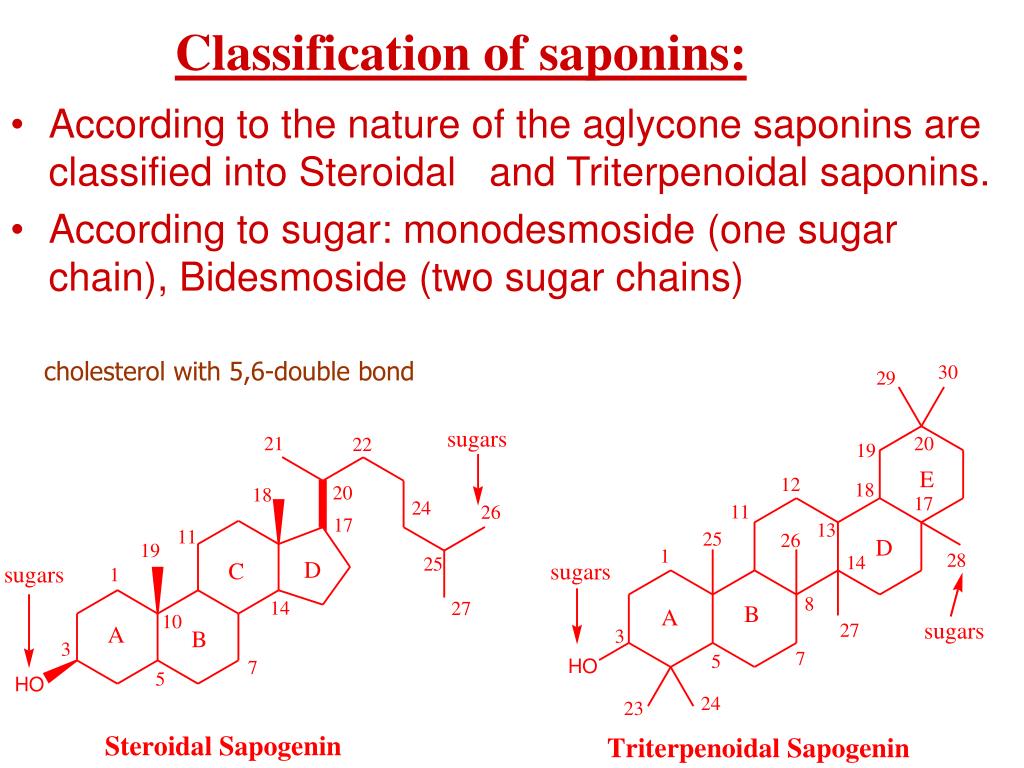In the vast realm of plant biochemistry, the concept of saponins emerges as a fascinating topic worthy of exploration. Often overlooked in casual discussions, these remarkable compounds possess a deeper meaning that transcends their superficial characterization as mere plant constituents. Delving into saponins unveils a tapestry of biological significance, agricultural applications, and potential health benefits that interconnect nature’s ingenuity with human advancement. Join us as we unravel the intricacies of saponins and their multifaceted roles in our world.
Saponins are a class of phytochemicals characterized by their unique chemical structure, which includes a sugar moiety (glycoside) linked to a triterpenoid or steroid aglycone. This distinctive arrangement grants saponins their ability to interact with biological membranes, leading to a plethora of noteworthy properties. From their frothy appearance when mixed with water to their potent bioactive effects, saponins engage in a fascinating dialogue between plants and their environment, facilitating both protection and communication.
Found in a diverse array of plant species, saponins serve various ecological functions. These compounds are most commonly recognized for their role in plant defense mechanisms. Their ability to form stable foams and exert hemolytic activity—destroying red blood cells—acts as a formidable deterrent against herbivores and pathogens. This protective trait is crucial for the survival of many plant species, enabling them to thrive in competitive ecosystems.
Furthermore, saponins have gained prominence in agricultural contexts, where they are utilized in biopesticides and as natural surfactants. The application of saponin-rich extracts can enhance the efficacy of pest control, fostering an environmentally friendly approach that minimizes reliance on synthetic chemicals. Farmers leveraging these natural compounds contribute not only to sustainable agriculture but also to the broader agenda of preserving ecological balance.
Beyond their agricultural significance, saponins are attracting substantial interest in the health and wellness sector for their potential therapeutic effects. Numerous studies have indicated that saponins exhibit various bioactivities, including anti-inflammatory, antioxidant, and cholesterol-lowering effects. Researchers are investigating these compounds for their capacity to modulate immune responses and improve overall health outcomes.
One of the most well-studied saponin sources is the humble soybean. Soy saponins have drawn attention for their ability to enhance cardiovascular health by lowering cholesterol levels and promoting healthy lipid profiles. In a world where cardiovascular diseases loom large as a health threat, understanding and harnessing the power of saponins becomes imperative.
Another notable example is the saponins derived from ginseng, a revered medicinal herb. Ginsenosides, a class of saponins exclusive to ginseng, are celebrated for their adaptogenic properties, which may help the body adapt to stress and enhance mental performance. The exploration of saponins from various plants highlights the vast potential within these natural compounds, paving the way for future innovations in healthcare.
However, it is essential to approach the consumption of saponin-rich foods with caution. While many plants contain beneficial saponins, some can be toxic at high levels. For instance, certain legumes possess safoquin, a toxic form of saponin that can induce gastrointestinal distress if consumed in large quantities. Such dichotomies raise intriguing questions about the balance between nutrition and toxicity, prompting further research to delineate safe consumption levels for different saponin sources.
Apart from their biological and medicinal implications, saponins have found a place in the realm of cosmetics and personal care. Their natural surfactant properties lend themselves well to applications in skin cleansing and moisturizing formulations. The allure of natural beauty solutions has grown significantly, with consumers increasingly gravitating towards products that leverage plant-based ingredients and avoid harsh chemicals.
Thus, saponins encapsulate a narrative of nature’s resilience and adaptability, showcasing the nuanced interactions between organisms and their environments. From the foamy waters of nature’s defensive mechanisms to the shelves of health stores, saponins bridge multiple domains of life, embodying both the fragility and strength inherent in natural systems. As research continues to unveil deeper insights into these complex compounds, the world awaits the next chapter in the story of saponins—a chapter that may offer profound implications for agriculture, health, and sustainability.
In summation, exploring the world of saponins reveals an intricate network of relationships that define ecological and human health dynamics. Their multifunctional roles—spanning plant defense, agriculture, health benefits, and cosmetic applications—underscore their importance in diverse sectors. As scientists, farmers, and consumers alike turn their gaze toward sustainable and natural solutions, saponins emerge as a beacon of potential, inviting us all to ponder the deeper meaning of these extraordinary compounds.









Leave a Comment